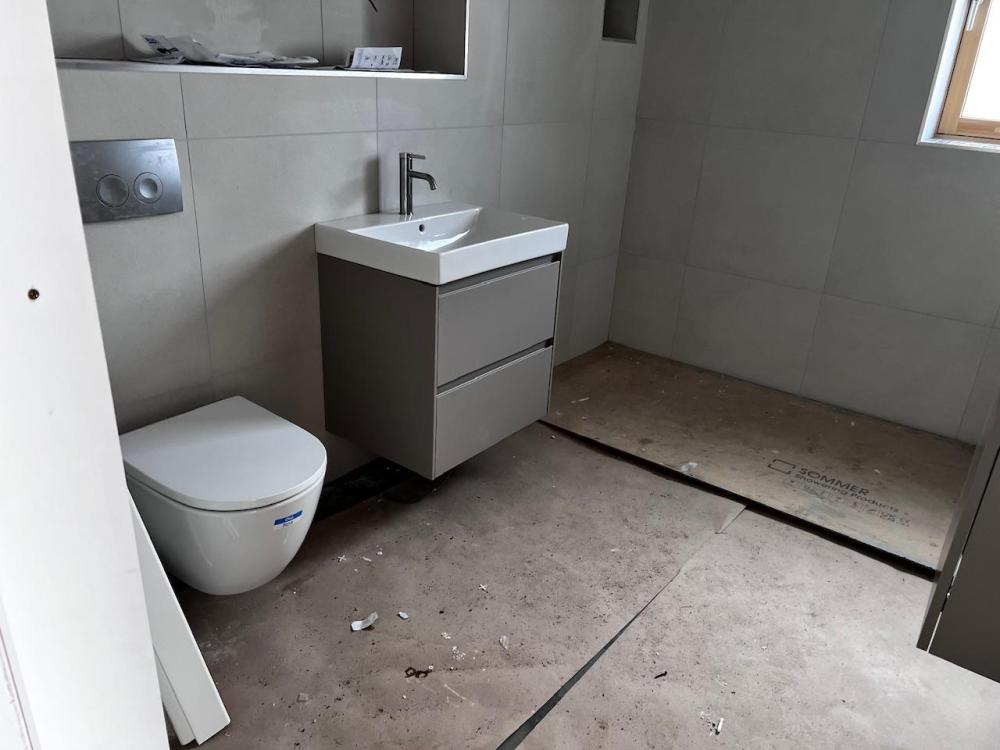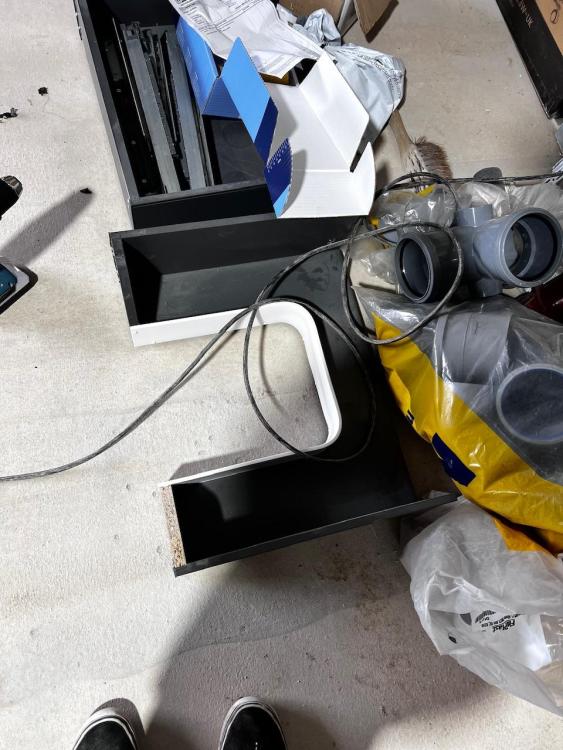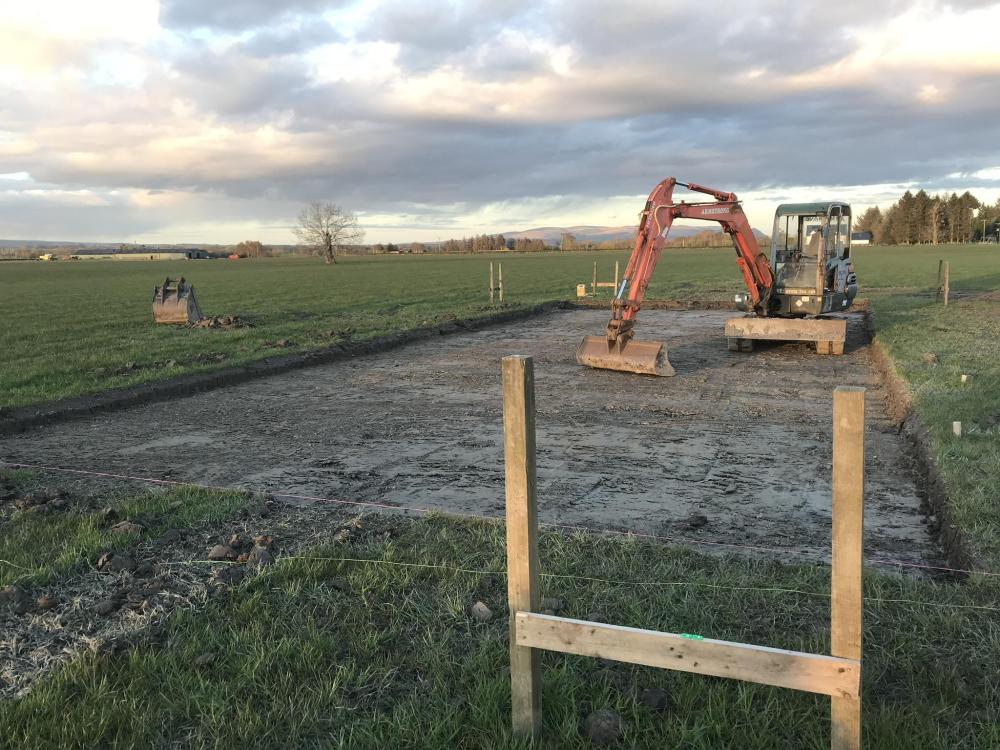Leaderboard
Popular Content
Showing content with the highest reputation on 04/17/24 in all areas
-
I don't mean to be harsh, but don't you think you kinda brought this second mess on yourself? You actively chose to get back a tradesperson who you already know made a potentially life-threatening mistake and he wasn't even able to fix it when told about it originally! What made you think his second-fix plumbing in your bathroom would be any better? If he didn't provide a quote, what did he agree to? What do you have in writing? Did you take detailed photographic evidence of his mistakes before you fixed them? If you've got pics, ask him for an itemised bill, and then you can prove that he didn't actually fulfill those things properly and therefore you're not paying. But to be brutally honest, I think you partially brought this on yourself and might need to chalk it up as not-too-expensive life lesson.4 points
-
3 points
-
Just to complete this with pictures. The top picture is the Diy online kitchens under sink drawer. The second picture is the U shaped Blum under sink drawer that didn’t fit as it fouled the bottom of the sink and the Quooker wouldn’t fit behind it. The bottom picture is how we fixed that problem with the two half depth drawers one of which I cut down at the back to get it to clear the sink.2 points
-
Why are you doing it that way? I'm assuming it's PIR insualtion on top of a concrete slab? Pumped liquid screed would be around £2k.2 points
-
My justification was, I am earning, if I don't spend on this, it will go on rubbish elsewhere. The spend now, while I can afford it, is a reduced utility bill when I can least afford it - retirement. It's a better return than a same money in a pension pot.2 points
-
1 point
-
1 point
-
Problem is, screeders seem thin on the ground here in Edinburgh. I mean, how does one find them? The internet offers v. little in the way of people who do this kind of work except big companys. I have a feeling I might have to suck it up as he's scheduled to start Monday.1 point
-
Doing the whole thing will be easier. Bear in mind the depth specified is from ground level, not the depth of concrete. You may be able to just put in concrete 300 deep and build up with blockwork.1 point
-
The K103 stuff (phenolic) is really expensive. Just use PIR at a minimum thickness of 150mm ideally more and all the PIR stuff is the same so buy on price.1 point
-
Thank you. Yes it's a drain but its temporary and will need relaying with the correct grade once concrete has been laid. Concrete will be poured to below the drain and lintel over the pipe in the blockwork1 point
-
Don't see why not. If the local ground conditions require a 1.0m min. dig, odds are that bit in the middle will fall over anyway. Be cautious about undermining the existing foundations of the house by digging too wide where you abut though. Is that a drain bottom right?1 point
-
Every hire company I've dealt with will either insist on seeing an insurance certificate to cover plant hire before opening an account and check that it has enough cover for the plant being hired, or they will offer you insurance, which will cost you. It would be pretty stupid for a hire company not to ask for proof of insurance in this business - one company i have an account with insisted on speaking to the insurers directly even after seeing the insurance certificate because they've been conned before. Question is whether you want to take on the risk of a piece of machinery worth at least £50k and any damage it could cause?1 point
-
I let the timber kit company hire the tele-handler then didn’t let anyone else but their guys drive it other than the scaffolders who would start using it the minute my back was turned so I had to remove the keys and keep it locked. They keep the original codes it seems as there was a common code with all the JCB kit that every trade that came to site knew.1 point
-
We paid £17m² for 50mm cemfloor two years ago, I'm sure it's in the £20s now. Still, way cheaper than the OPs original proposal.1 point
-
Yeah they really don’t get involved in the technical side of things They could go round checking thicknesses of insulation But as with most things They are checking to see it’s installed properly1 point
-
You only show what they ask to see. My inspections were prior to mass fill of foundation concrete, prior to plasterboard and when everything finished. Could have used anything for the upstand no-one would have seen or cared (except me).1 point
-
It sounds like you need a flexible system not a rigid grid. This was done on one the very first Grand Designs, back in 1999, with Kevin being introduced to landscaping mesh as used on embankments, which comes as a folded concertina of large hexagonal cells. This was when he was still an interior decorator and had hair. Series One Episode 4. Probably there are now "biodegradable over X years" products made of organic materials. The Amersham Water Tower. Lovely background music. Here's the C4 link. You'll need to tolerate some adverts. The first GD with application of "commercial architecture" techniques. They have done a couple of revisits since. The bit you want is at about 37 minutes, but the whole thing is worth a rewatch. https://www.channel4.com/programmes/grand-designs/on-demand/26262-004 Look under "soil erosion prevention" or "gravel retention" or "GEO grid" categories.1 point
-
Think it came in manhandled sections and was pinned to the ground with bent rebar pins.1 point
-
The heat loss through your door handles will be tiny. I don’t have the MVHR running yet and the house is very airtight. Zero condensation anywhere. It’s 99% condensation because the house is still drying out and can take 18 months or so to fully dry out depending on how it was built and how wet it got during the build. My screed had been down for months before we switched the heating on to dry it out before tiling. I was surprised how much moisture was still in the screed.1 point
-
I think the way the polders were originally protected was by banging in sticks quite deep but sticking out, then plants roots can cling to them. So mh suggestion is hessian, pinned down with sticks from plang thinning, and then grass seed either over or under it. And/Or your bear berry inserted in slits. I hope you keep us informed of progress and success.1 point
-
Welcome As others have said, what does that actually mean? In the 'olden days' buildings relied on a fire (usually open) to draw air up a chimney, that air was replaced by uncontrolled leaks in the building fabric. Since we got rid of open fires (though there is still a lot of people that think they are the greatest thing invented) and fitted heating systems, we have relied on those original, uncontrolled fabric leaks to ventilate our properties. As building standards and techniques have improved, generally our airtightness has got better. This has caused a problem with internal humidity becoming higher and causing mould growth and general air stuffiness. To get around this more ventilation, but more controllable, has been introduced. This is usually though window trickle vents and air bricks. While this change was happening, there was little regard to energy usage, so we fitted larger heating systems. This seemed to work in the majority of homes, but, and this is an important but, if it is not used correctly i.e. heating on for only a few hours a day, a yoyo affect happens with the temperature rising a falling, which changes the relative humidity. This in turn changes the dew point temperature and the water vapour that is naturally in the air (from people, cooking, washing, drying clothes and pot plants), this water vapour can now condense to liquid water on cold surfaces and cause an environment that is ideal for mould growth. So just changing the air may not cure all the problems. To get around the problem, many people fit mechanical ventilation in bathrooms and kitchens. These units generally are oversized and shift a lot of air. 1 litre per second of air is converts to 4.5 kg of air per hour. Cheap fans can easily shift 30 l/s. Now the trouble starts when a fan is fitted with no regard to the original leakiness of the building. Because replacement air has to enter the building somewhere, and will take the path of least resistance, it is possible to create cold spots around these leaks, this is where mould will starts. This is not really a problem if they are visible and they can be dealt with on a regular basis, but if they are hidden, they become a problem as the air movement that is naturally there will distribute the mould spores. It is those spores that are the problem. This is why 'positive pressure' systems are often fitted, they are designed to blow outside air (I will not call it clean air) into a building in a controlled fashion. That new air needs to find a path out the building, and it does it via the holes in the building fabric. Often this is not a problem, but occasionally it can exit into an area what can cause problems and then condense, creating a mould problem that can start to rot the fabric of the building. To get around this, modern houses are designed to be airtight, and then only known exit points all the inside air to leave (you can read up on vapour control layers and wind tight membranes, it is a huge subject and very misunderstood). That is a bit of background (and unedited for clarity). So just pumping in air, or extracting air, may not solve the problems on its own, and can cause energy usage to increase. To reduce energy usage, mechanical extraction is often fitted with heat recovery (heat is the old word for energy). These help keep bills lower as they can recover approximately 80% of the energy that would be lost in the expelled air and reintroduce it into the replacement air (again, I hesitate to say clean air). The trouble is that it does nothing to change the existing leakiness of the building, so those thermal losses have to be added to whatever losses the MVHR (mechanical ventilation and heat recovery) losses are. If that is not taken into account when designing a system then performance can seem disappointing. If you want to deal with this problem, then the first thing you need to do is get an air tightness test done and fix all the leaks you can. This can be expensive, but does give you a known base to work from, and solves all those small places that mould can grow. Then you can fit just about any mechanical ventilation system and start to see benefits. As you are in London, which is a big place with varied air quality, the type of filters used becomes important. It is relatively easy to filter out pollens, but fungal spores are a lot smaller, so harder to filter out, gases like Nox are smaller still, PM10 to PM1 are similar sizes sores, so virtually impossible to mechanically filter. You have to stop fungus growing and being distributed indoors. All seems a bit doom and gloomy, and expensive, but you can make improvements. (I suffer really badly from allergies and they virtually disappeared, apart from seasonal hayfever and to animals, when I moved to 2 miles from the Cornish coast from Hertfordshire)1 point
-
I did a small area on a 50 deg slope, a couple of years later the bags have all rotted away, but it does give time for the plant roots to take over. Much less labour intensive is the correct landscaping mesh then back fill with soil.1 point
-
Use Compacfoam CF200, 75mm x 100mm. From Green Building Store. Took the joiner 30 mins to do 2x roof light up stands. Might look expensive, but not paying a joiner to faff about for 1/2 a day. Super simple, zero cold bridges. I also lined the whole space with 25mm PIR for belts and braces.1 point
-
We have drawers everywhere £££. But they are a lot more useful. You can get the U shaped drawers for under the sink as we have one. However it fouled the bottom of our sink and didn’t leave enough room for the Quooker so be mindful of that. How we got around that was to have half depth drawers made up. They are big enough to be practical. Diy kitchens on-line also do undersink U shaped drawers. We have one of those in the utility room. It’s a wire drawer.1 point
-
1 point
-
First plot we bought 20 years ago, the vendor had already done percolation tests and deigned a system with a drainage field under the field behind us, and already negotiated a right of servitude with the land owner to allow that. So that one was low risk. Recent plot, no such pre planning. We bought the plot because we wanted it, it was 2 doors up the road from our first build, so we already knew the geography. It was a larger plot, with enough toom for a drainage field on our own land. BUT it has a seasonal high water table. We got outline planning on the basis of building a filter mound drainage system in our garden. Come to building regs time, they rejected that, and a second alternative plan. Squeaky bum time, plot with no building warrant. It was solved for us by SEPA allowing a treatment plant discharging to the burn running through our garden. Up here they only allow discharge to a watercourse if there are no other options.1 point
-
As ever with self builds, if it's a problem 1% of the time.....worry about it 1% of the time, until you accept and move on. Very very cold days happen several times a year, you can't win them all.1 point
-
If the house is not finished and fully dried up, many surfaces will have condensation. Don't panic until everything is heated up and dried out. We've 5 internorm doors and no issues like that at all.1 point
-
Regardless of that you shouldn’t be getting condensation on the door handle. The only time I’ve had condensation on the metal door parts was after we had plastered and when we first switched the heating on and that was with three dehumidifiers running. It is likely humidity in the house.1 point
-
1 point
-
OK. A virtual pint is what the doctor prefers. Gravel in a gravel grid catches any oil drips over their large surface area and exposes them to bacteria. and the oil gets consumed. But what if you have a major spill? Most will stick to the gravel and the rest to the membrane beneath it, which wont allow oil through. In extremis it then washes down to the side where you collect it to a storage area. As long as your catchment is on the surface like a ditch or lagoon, and not connected to springs or soakaways, then it will rise to the top and you can skim it off if the plants don't consume it first. Phew. Or you could add a small weir / catchment between pipes and lagoon, so that water goes through a half height pipe and oil stays on top. £300 instead of thousands but that's still excessive. This is to be preferred to a hidden oil interceptor where oil gathers unseen until it washes through. This is all provable somewhere but I can't remember where. Anyway I've done it loads of times for schools and offices ( 40 spaces or so) , and has always been approved. and I know it works. You must state it all with utter confidence as a complete strategy. Block pavers with gaps for drainage also work, if you have open stone beneath. but the gaps clog quite quickly.1 point
-
Just for anyone else! - what a fun day. Documentation suggests Shelly doesn't work with Asus AiMesh - which of course I have. Then Shelly gen 3 doesn't need CoAP so should not be an issue. My shelly is gen 3. Then ( of course! ) shelly HA integration mustn't be the HACs version ( for gods sake someone remove it! as it is obsolete ! ). But if you don't know and install it you then have the fun of trying to uninstall it as it fights you!. Once you win you then install the shelly 'normal' integration and then the (expletive deleted)er works!1 point
-
They shouldn't if well mixed and compacted. A road is a mix of stones not unlike MOT I , but stuck together by a glue of bitumen. If it is supplied as all big stones then it will have gaps and drain. If it is footpath material or surface dressing, then it is weak but solid. I think the best of it goes back into new road surfacing these days, and the rest is sold off. So its best to lay the base to a fall and try to keep the sharp sand depth consistent . And it will be easier to lay.1 point
-
We get a little condensation on the Eurolocks on the inside of our Rationel doors. Only a little and only when very cold outside. It is a fact of metal parts that pass through the door. The Rationel doors have a similar plastic / foam part that does it's best to block draughts and maintain some insulation in that area, but the fact is with the door handle you have a solid steel shaft passing through. Unless Internorm have designed a shaft with a thermally insulating section that still maintains the strength normally provided by a metal part?1 point
-
As above, Type1 holds water, if it’s under a drive or garden area, road plannings compact very well and drain well too.1 point
-
Yeah +1 to what everyone’s said. Obviously if you claim stuff that doesn’t quite add up in terms of the stage you’re at / what’s on the plans it risks issues with your claim. But if it’s the stuff like you say kitchen, or landscaping materials you should be ok. I was a bit nervous about a lot of that so I got in a load of material i needed in asap and created my own little builders yard. I got a temp habitation cert with a couple of cheap ikea kitchen units then fitted a proper kitchen afterwards. Claimed the proper kitchen but not the temp one. Wouldn’t do any harm to keep a photographic record of progress at the regs sign off so if they challenge something you can show it did in fact get installed at the house. Agree with Connor put in a covering letter with explanation if anything that may be seen as potentially questionable. I had a few things, did just that and it went through no probs.1 point
-
Compacted MOT1 does not drain well, so don't expect water to drain through it quickly, so a fall would make great sense.1 point
-
Yeah, we claimed paving and other bits. We just included a letter explaining the reasons. No issues with any of them.1 point
-
Consider this from the Permitted Devlopment order: Permitted development A. The enlargement, improvement or other alteration of a dwellinghouse. As well as under minor operations: Permitted development C. The painting of the exterior of any building or work. So if you can paint the exterior walls of your house vivid purple, the improvement from white to grey windows shouldn't get your "neighbour" upset!1 point
-
Ultra / Mapei / Bal etc are all fine and usually on the shelf in most decent outlets. Been installing bathrooms for over 30 years with all of them, never missed a beat . My 2 cents, do not use silicone for fundamental sealing, just use it as a cosmetic seal; I don't EVER use silicone to seal trays before tiling, instead use CT1 as it is a completely different product without the short service life that silicone(s) tend to have.1 point
-
Not just non-Chinese plants. Similar thing happened with DVD Players 20 years ago. DVD player profits down to $1 | ZDNET1 point
-
If you use a 50 mil metal stud You will be about £18 m2 all in Upto a height of 2.4 for freestanding add 20% for any higher up-to 3000 freestanding1 point
-
No idea on cost comparison, but stud walls are quick easy, double bottom rail single top rail, and the verticals at 600mm centres and noggins at 1200mm centres. All wiring in drilled holes in studs (3x2 non structural), 50mm insulation, plasterboard, done.1 point
-
I used longi 410w panels on my build from city plumbing and paid around £105 / panel delivered late 2023. I'm tempted to buy more and put them on the steel building planned for this year. Possibly off grid. I like the idea of batteries to try to get the heating and DHW plus running the cabins all off grid. But ironically the house running costs being low hinder the cost justification.1 point
-
You could go for proper window shutters and make a feature of it? Internally or externally. I used to dream of that regularly up in the Shetland house, with 80mph winds rattling the glass ^^. Random pic off t'internet1 point
-
Anything that needs commissioning - fire alarm and detection systems, ventilation systems, boilers, stoves UVHWS and so on. EPC. As-Built SAP. Pumped cavity wall insulation guarantee certificate if applicable. ID card for UVHWS installer. Air Test. Pile log if applicable. Timber frame and timber truss structural certificates if applicable. Precast floor slab layout if applicable. Steel lintel certificate if applicable. Posi-Joist layout if applicable. Intumescent paint certificate where applicable.1 point
-
Sure but the argument is that the impact of wbs in rural homes is minimal. I’m with you but I can understand the other side of the debate for rural houses. The house we rent is freezing. You’d have to set it alight to heat it. It does have a wbs and we get free seasoned wood from the farmer which is all produced on the farm. But I hate the thing. It’s makes a mess, the heat is hard to control, the air quality in the room it’s in isn’t great etc.0 points
This leaderboard is set to London/GMT+01:00















